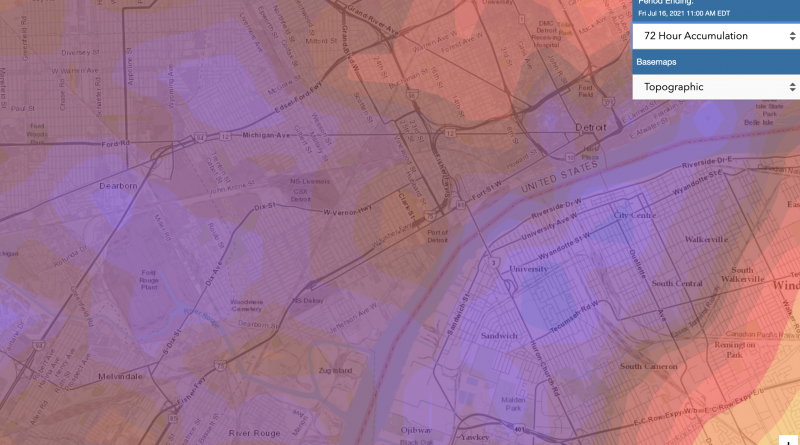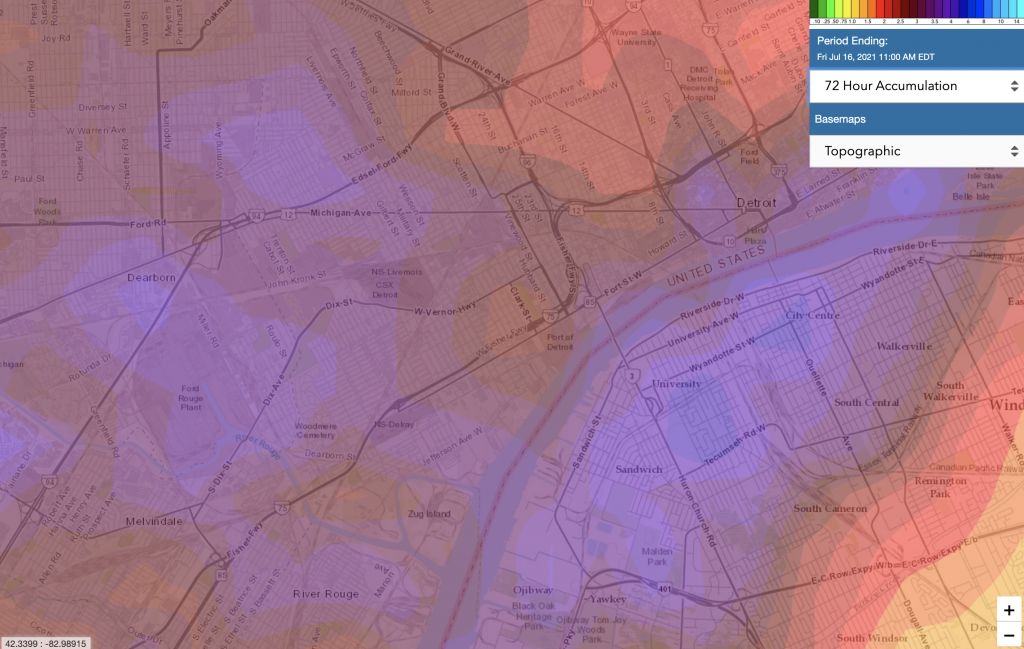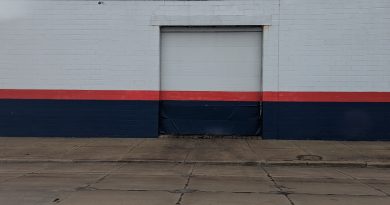Throw out your flood-damaged possessions. And your climate models.
Last night, my phone told me that Friday would probably be rainy– all day. Rain, my phone said, would probably start in the morning, and continue through the afternoon and evening. It started raining during my second meeting of the morning. The rain started as a drizzle and then became torrential. The weather report predicted about an inch of rain during the day and possibly half an inch in the evening. Cool, I can deal with it.
If Not Now, When? Detroit Flooding Raises Questions.
Toward A 100-Year Storm Event Every Month?
But as I looked out at the back yard, I noted that the rain garden that we laboriously built, and the pervious patio we installed with our own two hands, was under two or three inches of water. The basement, too, was registering a few waterfalls coming off the northern wall, which is butted up against the neighbor’s sidewalk– but which has a french drain that is designed to channel away and/or hold the equivalent of an inch or two of water in a 24-hour period. The rain garden was designed to hold several inches worth of rain. Again– not all at once. In the previous flooding event two weeks ago, it didn’t actually flood. Weird.
So, the yet-weirder thing about the weather prediction? We didn’t get just an inch. We got twice that– about two inches. And not over the course of eight hours– most of it fell in about one hour. 72-hour accumulation numbers in my local area reached as much as four or even five inches. This is putting a single, one-off rain event– that didn’t even rank as a blip in the weather advisory alerts- in the realm of being comparably as extreme as the catastrophic flooding two weeks ago, which drowned vehicles and destroyed a range of basement-stored worldly possessions across the Detroit metro area.
What’s More Expensive Than Spending On Climate Change? Not Spending On It.
Adapting, When You Can’t Predict
We need to throw out our climate models. They’re basically all completely inaccurate at this point. Such has been observed in the major heat events in the northwestern United States and in Canada in recent weeks. Records have been shattered. Wildfires become more severe, droughts become more intense. Instead, we need to start figuring out how to adapt to the new normal of extremes. During this time, we’ll also have to figure out how to conquer this whole greenhouse gas thing, because that’s causing beaucoup problems– and there’s some hope on that front, for sure. But it’s going to take throwing out predictive modeling in favor of adaptive modeling. In other words, buckle up. It’s time to figure out how to adapt.
This doesn’t mean “resign ourselves to the coming apocalypse.” Rather, it means that we have to throw out the idea of business as usual along with our flood-damaged possessions– and our climate models. We can’t keep paving over everything with hardscaping and expect things not to flood. Rather, we have to start aggressively implementing water-retentive installations– everywhere. We also have to figure out how to stormproof– and futureproof- our infrastructure. The light at the end of the tunnel? Most of these measures actually end up mitigating climate change to begin with, by way of carbon sequestration or absorption, not to mention improved stormwater management, air quality, and mitigation of the urban heat island.
Avoiding The Cycle of “Disaster, Rinse, Repeat”
What we can’t do: Just write everything off as a disaster, request FEMA funding to fix it, and just keep going as usual. MDOT has already proposed its own fixes for the widespread flooding of freeways in the past few weeks, and it involves improving pump stations. Not fixing runoff issues, not fixing erosion, not planting water-retentive areas along freeways– fixing pump stations. It’s not going to stop, and it’s not going to get better, unless we get serious about fixing it. This begins with getting rid of the climate models. It continues with getting serious about building resiliency at every step of our infrastructure as we work to address the climate crisis.
The Handbuilt City is a proud member of the American Society of Adaptation Professionals. Check ’em out!
A spokesperson for the city of Detroit said that the city and water department were currently evaluating the storm sewer system to try and understand where points of failure may have occurred, and that the city would be able to produce more detailed data in the coming weeks. We also reached out to AAA to ask about specifically damaged vehicles, and have not heard back.






